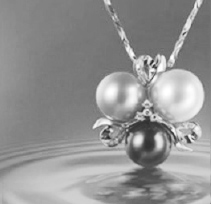RINGS
EDUCATION
Thousands of couples around the world have trusted us with their most important moments. With the largest selection of diamonds and meticulously designed, handcrafted rings, were here to help you find your way to the perfect ring.
DIAMOND
EDUCATION
For most people, buying a diamond is a new experience, but that doesn't mean it should be overwhelming. Understanding a diamond's quality characteristics is straightforward and simple.
Our diamond education is designed to answer all your questions. In just a few minutes you'll know everything you need to know to find your perfect diamond.
JEWELLERY
EDUCATION
it is our mission to take the mystery out of your purchase by offering only the finest quality fine jewellery available, along with expert guidance and education. Our jewellery is crafted with superior materials and inspected against exceptional quality standards.
PEARL
EDUCATION
Use this guide to find the pearl that is right for you by educating yourself on the quality and value of the cultured pearls that we offer.
GEMSTONE
EDUCATION
Gemstones and rare minerals can evoke strong emotions and spur intrigue. While most loose gemstones and minerals are purchased for ornamental jewellery purposes, others are possessed for their fascinating attributes. Natural gemstones and minerals add sparkle to our lives and invigorate our soul with the earth's natural beauty.
DIAMOND FLUORESCENCE
Chapter 5 -
Approximately 30% of all diamonds will naturally emit a glow under ultraviolet light. This is called diamond fluorescence, and can range from faint to very strong. If a diamond has no fluorescence, it will be described as 'none'. These diamonds are priced at a premium because, while fluorescence is not typically visible in natural light, the quality is perceived to be a defect. Rather than a defect, fluorescence is caused by an anomaly in the diamond's atomic structure. To some diamond shoppers, this quality is desirable but to many, it is not.
Diamond Education
Chapters
Due to its negligible effect on the overall appearance of a diamond, Fonder Diamond does not recommend selecting your diamond based primarily on its fluorescence grade. A 1997 study conducted by the GIA concluded that, "for the average observer, meant to represent the jewelry buying public, no systematic effects of fluorescence were detected." Generally, diamonds with faint to medium fluorescence are options for better value, as the difference in price can be invested in a higher cut or clarity grade.
In diamonds with Faint Yellow color grades (K and L), or even those at the lower end of Near Colorless (I and J), a high fluorescent grade may make the diamond appear whiter. The blue tones in its fluorescence can help to balance out yellow secondary tones. This may result in a diamond that looks as if its color grade is actually higher than it really is.
The GIA and the AGSL grade diamond fluorescence differently. While the GIA determine a diamond's grade by viewing it with the diamond's table facing down, the AGSL grades with the table facing up. AGSL also combines the two GIA grades of 'Faint' and 'None' into one: 'Negligible'. Keep in mind that if a diamond is graded 'Negligible', it may exhibit some subtle fluorescence under ultraviolet light.
While the majority of diamonds with fluorescence do so in a blue tone, other colors are possible. Rare yellow, orange, green and red fluorescence have been documented. These hues can increase the desirability of fancy colored diamonds if they complement their primary hue. A fancy yellow diamond with yellow fluorescence, for example, will have an intensity that appeals to many diamond customers, potentially raising the value of the stone.





















